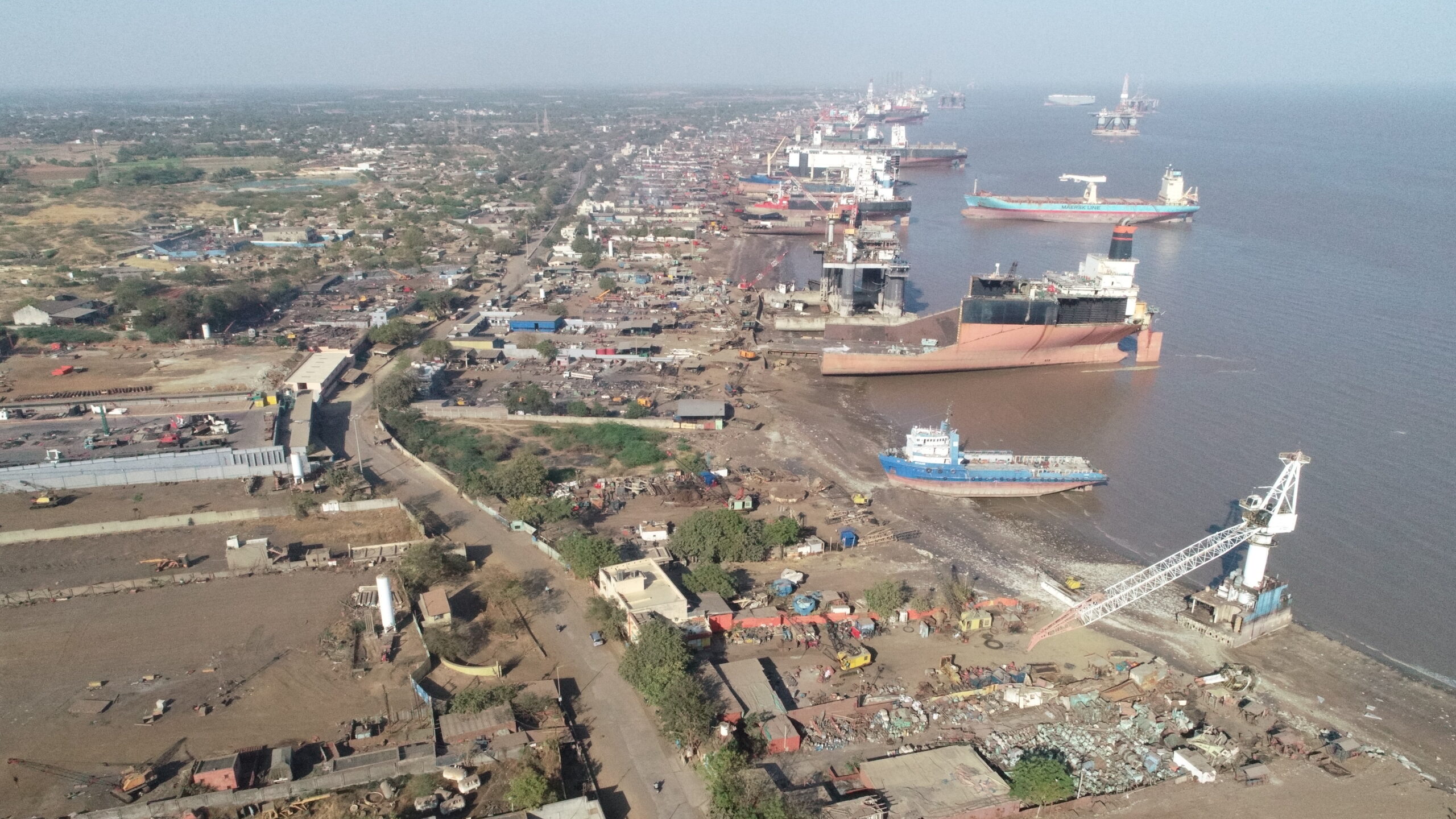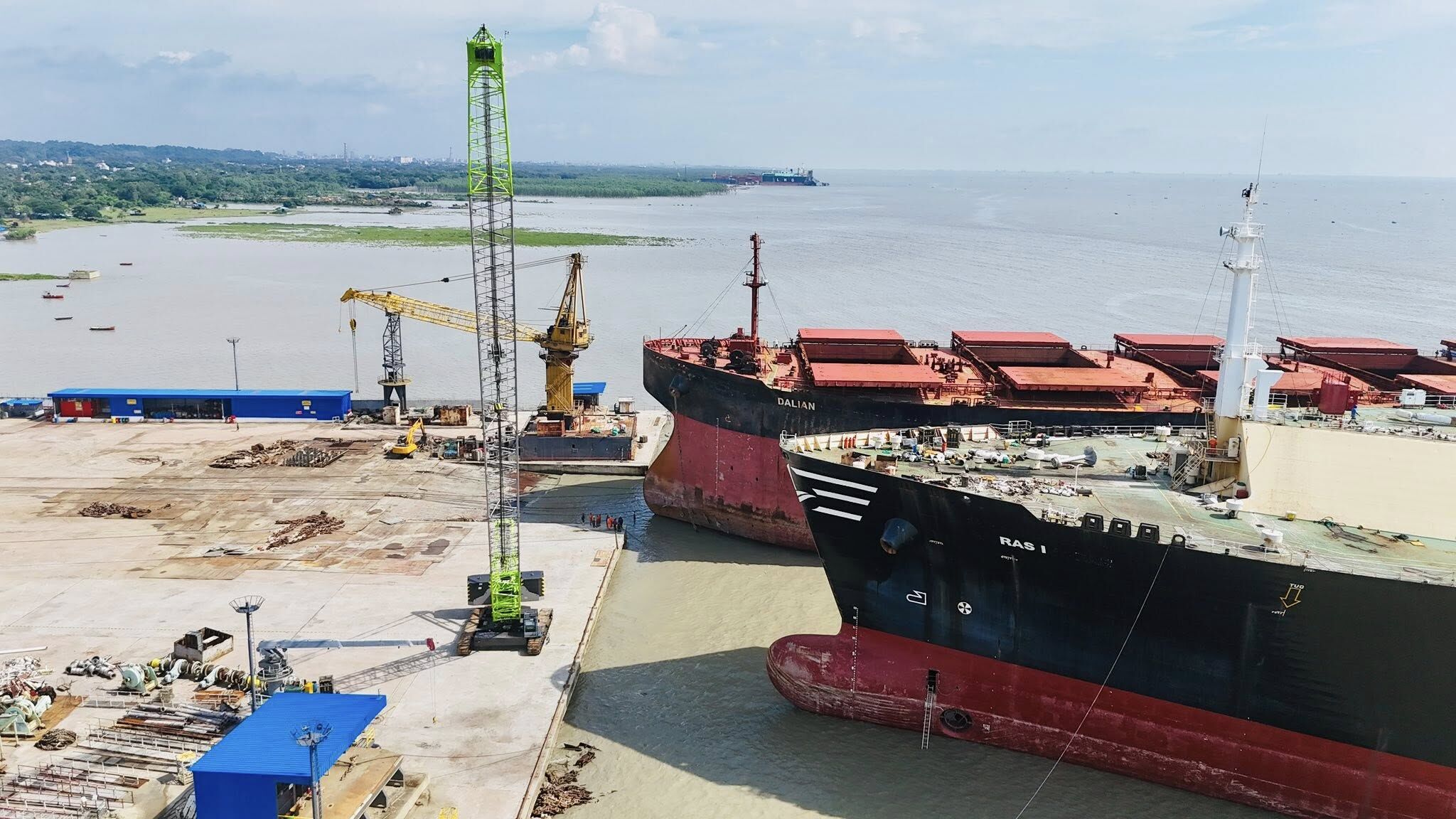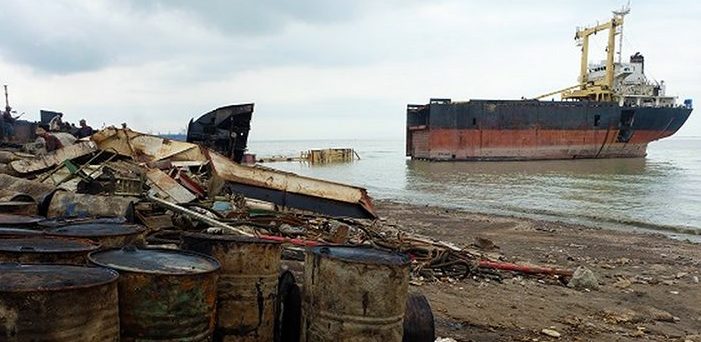Ship Recycling Set Back Amid Red Sea Crisis: Shipping Industry Struggles with Lengthened Voyages and Soaring Freight Rates

The global shipping and recycling industry has been hit hard this past year, grappling with a series of challenges that have created ripple effects worldwide. A key factor has been the ongoing conflict in the Middle East, particularly the Red Sea crisis caused by Houthi rebel attacks. These attacks have led to prolonged shipping routes, extending voyages by up to 15 days, pushing up freight rates, and severely denting the demand for vessels typically earmarked for recycling.
As the world faces an increasingly urgent need for efficient recycling systems and supply chains, this downturn has raised concerns across industries that rely heavily on shipping and recycling, creating a backlog in older vessels that would typically be decommissioned and sent to the scrap yards.
Red Sea Crisis: Disruption and Congestion
The Red Sea, a crucial waterway for global trade, has become a hotspot for conflict due to ongoing attacks by Houthi forces. This crisis has significantly altered the dynamics of shipping routes, forcing vessels to take longer journeys to avoid conflict zones. As a result, voyage times have increased, and freight rates have soared with them.
Shipping routes through the Red Sea are among the busiest in the world, carrying goods between Europe, the Middle East, and Asia. The extension of voyage times has created a cascading effect across the entire industry, as vessels are now spending more time at sea and less time being recycled or decommissioned. This has led to a decline in the number of ships being retired, with recycling yards worldwide experiencing a slowdown in operations.
Adding to this crisis, temporary congestion in Far East Asian ports has worsened the situation, compounding the delays and creating further bottlenecks. Ports that are typically efficient and handle massive volumes of goods have become overwhelmed, exacerbating the already strained global shipping infrastructure. The result is a significant disruption in the recycling of ships, a crucial process for maintaining the sustainability of global maritime operations.
Impact on Recycling: A Glimmer of Hope on the Horizon
Despite the current setbacks, industry experts are cautiously optimistic about the future. According to Wirana Shipping, a leading global ship recycling market player, the tide may soon turn. The company projects a substantial increase in the number of new ship deliveries across several key segments between now and 2026, which should lead to a rise in the number of older vessels being sent for recycling.
Container Ships: A Surge in Deliveries to Spur Recycling
One of the key areas where new buildings are expected to drive recycling activity is the container shipping sector. Container ships are the backbone of global trade, transporting a wide range of goods across the world. Wirana Shipping expects that over the next four years, new orders equivalent to 18% of the current container fleet will be delivered.
This influx of modern tonnage will bring larger, more efficient vessels into service, particularly in the long-term charter market. As these newer ships enter the fleet, older and smaller-sized container vessels are likely to be the first to be phased out and sent for recycling. The industry anticipates that this trend will help alleviate the current slowdown and drive an increase in the supply of ships for scrapping.
Vehicle Carriers: New Demand from the Red Sea Crisis
The vehicle carrier segment is another area where significant new-build deliveries are on the horizon. New orders for vehicle carrier ships account for 26% of the current fleet size, with the bulk of these deliveries expected to take place in 2025 and 2026.
The Red Sea crisis has directly impacted the demand for Pure Car and Truck Carriers (PCTCs), as the prolonged voyages through conflict zones have created additional demand for these vessels. Global demand for PCTCs is expected to grow at an annual rate of 5%, while fleet growth is forecasted at 8-9% during the same period. As newer, more efficient vehicle carriers enter the market, older tonnage will likely be sent for recycling starting in 2026.
LNG Ships: A Booming Market and Recycling Outlook
Liquefied Natural Gas (LNG) ships have also seen a surge in new building orders, with orders accounting for 49% of the current fleet size. Deliveries of LNG ships will accelerate in the coming years, with approximately 6% of the fleet expected to be delivered in 2024, 14% in 2025, 13% in 2026, and 11% in 2027.
The LNG market is expected to grow at an annual rate of 5.3%, driven by the increasing global demand for cleaner energy sources. Despite the potential for some older LNG vessels to be converted for power generation, many of these ships will likely be sent for recycling starting as early as 2025.
South Asian Steel Markets: A Weak Link in the Recycling Chain
While the supply of tonnage for recycling is expected to increase from the fourth quarter of 2024 and into 2025, the outlook for recycling in South Asia, which handles about 85% of global ship recycling, is not entirely positive. The region’s steel markets are currently weak, with low local demand for steel leading to reduced prices for recycled ships.
China, the world’s largest steel producer, has also experienced a reduction in steel production, with output falling by 2.2% year-on-year in the first seven months of 2024. This decline, coupled with China’s increased focus on exporting steel, has driven global steel prices down, further impacting the ship recycling market.
Rakesh Khetan, CEO of Wirana Shipping, emphasized that the current economic slowdown in China, coupled with weak consumer confidence and a sluggish property market, is making it difficult to achieve even a modest 5% economic growth rate for 2024. He noted that while central banks worldwide are expected to announce interest rate reductions, these measures are unlikely to provide an immediate boost to economic activity or liquidity.
“Even in the best-case scenario, global steel demand may only see a marginal improvement, which means that steel prices will continue to face pressure,” Khetan said. This, in turn, will limit the ability of ship recycling facilities (SRF) in South Asia to offer higher prices for scrapped vessels, further dampening the prospects for the recycling industry in the near term.
The Hong Kong Convention and Its Implications
As the recycling industry looks toward the future, one key development on the horizon is the implementation of the Hong Kong Convention (HKC) in June 2025. The HKC is an international agreement aimed at ensuring environmentally sound ship recycling practices.
However, not all South Asian recycling facilities are expected to be fully compliant with the HKC by the time it enters into force. This is particularly true for some facilities in Pakistan and Bangladesh, which have struggled with weak recycling markets over the past one to two years. The lack of HKC-compliant facilities could further restrict the number of available SRFs to accept vessels for recycling, creating additional challenges for the industry.
Timing Is Everything: Navigating the Market Cycle
With the global ship recycling industry facing a complex mix of challenges and opportunities, Khetan emphasized the importance of timing in making critical decisions regarding purchases and sales in the market. “The timing of making purchases and sales decisions will be critical for stakeholders in the recycling industry to maximize the benefits of the upcoming market cycle,” he said.
As the world navigates the fallout from the Red Sea crisis and other economic pressures, the ship recycling industry will need to adapt to the shifting landscape. While the current outlook remains challenging, the expected influx of new ships in the coming years offers a glimmer of hope for a more robust recycling market shortly.
In conclusion, while the recycling industry has taken a significant hit due to geopolitical tensions and economic slowdowns, the promise of new vessel deliveries across key shipping sectors—container ships, vehicle carriers, and LNG ships—could eventually drive a revival in recycling activities. However, much will depend on the resolution of current market imbalances and the ability of recycling facilities to adapt to evolving regulations and economic conditions.
Author: shipping inbox
shipping and maritime related web portal








